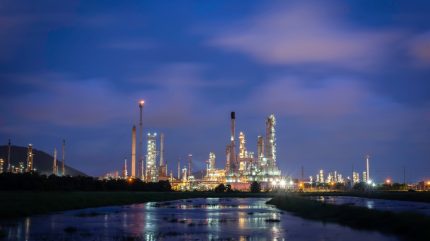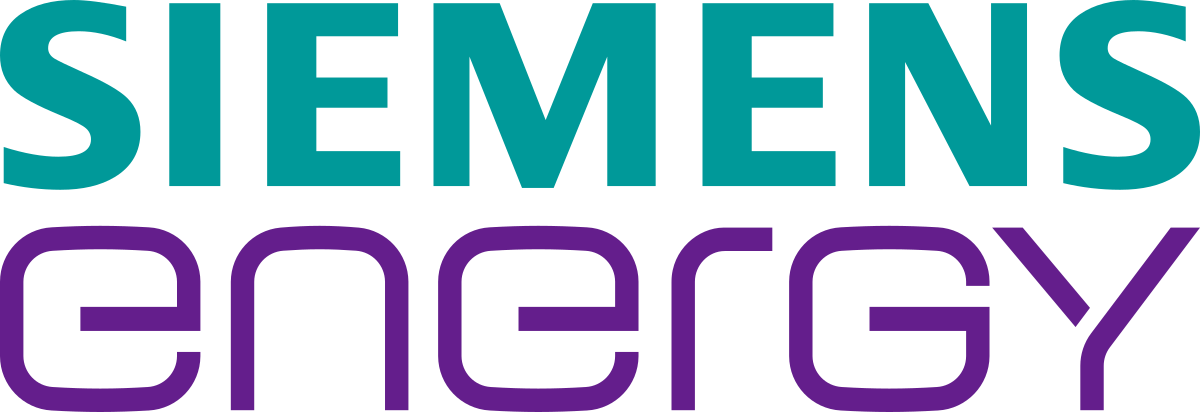
There is little doubt that the energy transition is gaining pace. According to GlobalData analysis, renewable energy accounted for around 31% of the global energy mix in 2022; hydropower currently leads the way, with wind and solar power gaining momentum all the time. The power produced by renewable energy sources is expected to surpass the power produced by fossil fuels by 2034. Total global power generation was 25.6PWh in 2020 and it is expected to reach 34.9PWh in 2030, a 10-year compound annual growth rate (CAGR) of more than 3%, with renewable energy showing the largest growth rates.
The path to mitigating climate crisis hinges on the decarbonization of energy systems. And, while expansion of renewable energy sources like wind and solar is critical, it also brings challenges, primarily due to their intermittent nature. During periods when energy from renewables is insufficient to meet demand, the system must rely on residual load from other sources. Historically, fossil fuel-based plants have filled this gap. But in the future, this needs to be done in a carbon neutral way.
This is where decarbonized gas turbines come into play. These turbines are efficient, flexible and can also utilize sustainable fuels, putting them at the heart of the future energy mix. They offer a dual advantage: providing necessary grid stability and covering residual load during extended periods of low renewable energy output.
Decarbonization of gas turbines can be achieved through two main routes. One is use of sustainable fuels such as hydrogen, biofuels or hydrogen derivates such as ammonia or methanol. The other is to retain natural gas as a power source while employing carbon capture, utilization, and storage (CCUS) technologies to dampen its environmental impact. All turbine owners will be forced to select one of these routes over the coming years, but which one will vary plant by plant; factors like regional renewable energy availability, expected capacity factor, legislative incentives and proximity to CO2 storage sites are all key considerations. Development of gas turbines that can operate on sustainable fuels offers significant opportunities for plants built for the fossil fuel age to navigate the green transition – if operators know how to get it right.
The key solutions
Among the contenders for decarbonizing power plants, hydrogen has been making headlines in recent years. Some of the world’s major gas turbine manufacturers, like Siemens Energy, are targeting 100% hydrogen capability as soon as 2030, with some aiming to introduce hydrogen-capable turbines even earlier. The unique combustion properties of hydrogen, including lower ignition energy and higher flame speed, poses technical challenges. But recent advances show promise.
The HYFLEXPOWER project has set a new benchmark for decarbonization of the energy sector, showcasing the immense potential of hydrogen as a sustainable fuel source. Spearheaded by Siemens Energy, in collaboration with ENGIE, Centrax and additional industry and academic partner and supported by the EU Horizon 2020 programme, the project successfully demonstrated an integrated industrial power-to-X-to-energy system at a paper mill in Saillat-sur-Vienne, France. It comprised of a gas turbine operating on 100% hydrogen, natural gas, and any blend of the two, using an SGT-400 turbine. Siemens Energy’s contribution included the supply of an electrolyzer for green hydrogen production and the development of dry low emissions hydrogen combustion technology, which proved effective in handling hydrogen combustion. It shows that, while infrastructure and costs remain significant barriers, a future of hydrogen-powered gas turbines looks increasingly viable.
Biogas, derived from the anaerobic digestion of organic matter, is another potential fuel for decarbonizing gas turbines. Sources include landfills, wastewater treatment plants and biodigesters processing agricultural waste. Biogas typically contains 40-75% methane, making it suitable for power generation in small to medium-sized gas turbines. And it can achieve emissions comparable to, or even lower than, natural gas when using dry low emissions combustors. Meanwhile renewable natural gas (RNG), or bio-methane, is pipeline-quality natural gas produced either by upgrading biogas to remove CO2 or gasifying dry biomass. RNG is well-suited to existing gas turbine systems and can attract incentives like tax breaks or renewable certificates. Although more costly due to additional processing requirements, RNG offers a renewable option that can be seamlessly integrated into current energy infrastructure.
Methane and its derivates offer further promising renewable fuel alternatives. Synthetic methane, or e-methane, is produced by methanating hydrogen and CO2. Like RNG options, it is compatible with existing gas turbine designs without modification. And, when using green hydrogen and biogenic or direct air capture (DAC) CO2, synthetic methane offers a low-carbon fuel option. However, the difficulties in handling, transporting and storage a gaseous fuel means that methanol, another e-fuel, is gaining traction as a more economical and scalable alternative for locations where access to piped hydrogen is not viable. It is easy to transport and store, has a much higher energy density than gaseous hydrogen and can be used in wide-ranging applications including provision of backup power and deployment in remote industrial operations, like mining, thanks to its storability. Early experimentation has revealed significant promise. A 2023 collaboration between the Net Zero Technology Centre, Siemens Energy and RWG successfully demonstrated biomethanol firing on an SGT-A20 gas turbine in Aberdeen on the east coast of Scotland; the test showed gas emissions from the turbine could be reduced by up to 75%.
The alternatives don’t end there. Ammonia, long used in industry as a fertilizer, is increasingly being explored as a fuel for gas turbines. High energy density and the possibility to transport and store it in a liquid phase make ammonia an appealing energy vector in a hydrogen economy. Its combustion properties present significant challenges, however. But cracked ammonia, where the compound is partially or fully decomposed into nitrogen and hydrogen before combustion, can get around this, and test blends with natural gas in gas turbines have already produced promising results. With many regions hamstrung by poor availability of renewable resources, importing hydrogen is their only route to carbon neutral energy – and ammonia would enable them to clean up their power generation quickly.
Sustainable liquid fuels, including biodiesels like hydrotreated vegetable oil and fatty acid methyl esters, represent a final route for decarbonizing gas turbines. These fuels, which can be manufactured from a variety of feedstocks such as vegetable oils, animal fats, and waste materials, have similar characteristics to conventional diesel. This makes them suitable for use in gas turbines with minimal modifications. The greenhouse gas savings compared with conventional fossil fuels can be as high as 93%, and some are already hitting the market. Following a demonstration test at the Rya CHP plant in Gothenburg, for example, HVO100, a hydrotreated vegetable oil, was released as an approved fuel for the SGT-800 gas turbine. Competition in other diesel-intensive sectors like automotive may limit availability for energy; but it shows there are myriad options on offer for greenifying gas turbines.
The final piece in the puzzle for decarbonizing gas turbines is CCUS. Applied to gas turbines, CCUS technology enable the continued use of natural gas while significantly reducing CO2 emissions. Various carbon capture technologies, including post-combustion capture using amine absorption or adsorption, are being developed and deployed, offering viable options for retrofitting existing plants or designing new ones. CCUS is especially interesting in areas with abundant natural gas reserves and has a further role to play in production of low-emission blue hydrogen from fossil fuels. Perfecting the technology will be pivotal in the energy transition’s success.
The long run outlook
Thanks to pioneering research and testing, a world of decarbonized gas turbines is in sight. By harmonising the green credentials of sustainable fuel with the grid stability required to satisfy consumer and business demand for power, gas turbines hold the key to accelerating the energy transition; intermittency need not hold it back.
What is clear from the solutions on offer is that different gas turbine operators will need to adopt different solutions. The journey to decarbonize gas turbines is multifaceted, with different regions likely to adopt different approaches based on local resources, infrastructure, and regulatory environments. For those with good conditions for renewable energy, hydrogen is a leading candidate for providing a like-for-like replacement with natural gas in existing turbines. Where hydrogen pipelines are not likely, biogas, biomethane, ammonia and other liquid biofuels all offer ready alternatives depending on a plant’s need and availability. In remote areas, where availability of alternative fuels is limited, methanol can be an attractive option, while CCUS is especially attractive for areas with limited renewable resources und abundant and cheap natural gas.
The question for plant owners is not if they should decarbonize, but when. Relying on the expertise of an experienced partner like Siemens Energy can offer significant benefits for plant owners navigating the transition to greener energy. Siemens Energy brings decades of expertise in gas turbine technology. As has been discussed, they stand on the frontline of change, exemplified in successful tests of 100% hydrogen in SGT-400 turbines, biomethanol in the SGT-A20 and hydrotreated vegetable oil in the SGT-800. And, with the firm’s experts continuing to conduct research into optimizing green hydrogen, ammonia production, CCUS and other carbon minimizing methods, working with Siemens Energy promises futureproof support in ensuring that gas turbine plants – whatever their age – remain viable and sustainable in the long term.
Plant owners will be conscious that making strategic decisions around fuel choices, technology investments and partnerships will be crucial for navigating the green transition. Siemens Energy is working on technology advancements to support the carbon neutral operation of gas turbines. Download the whitepaper on this page to find out more.


